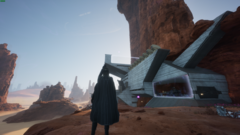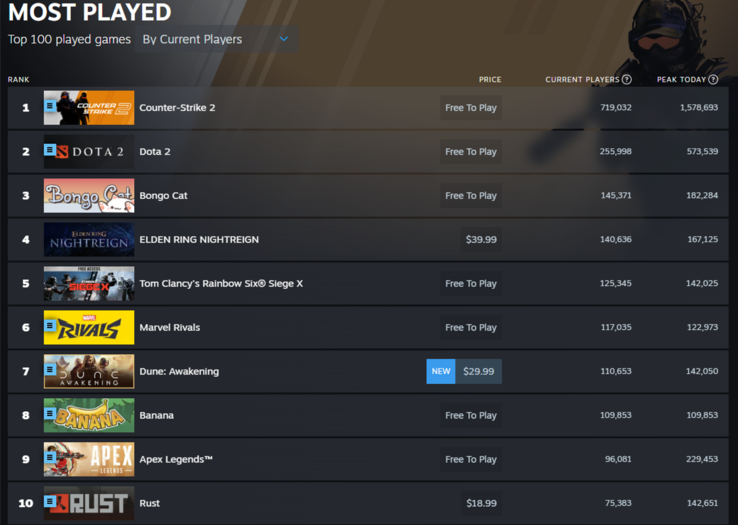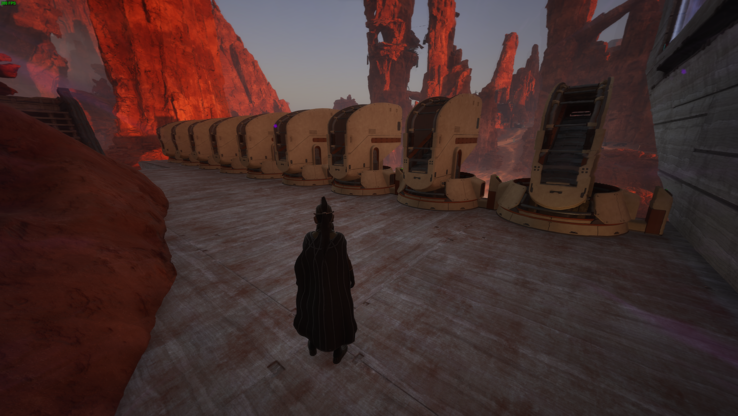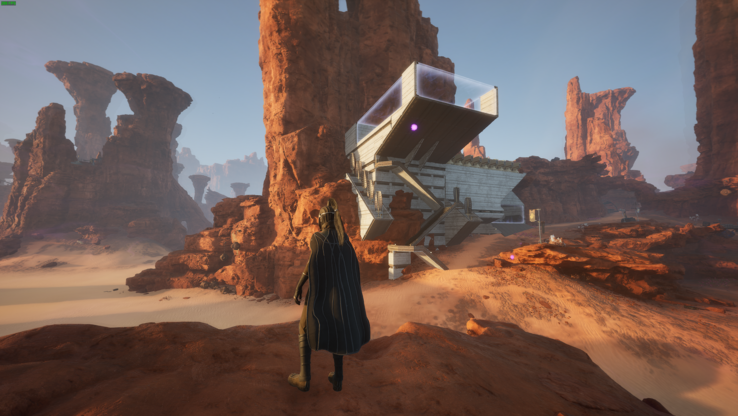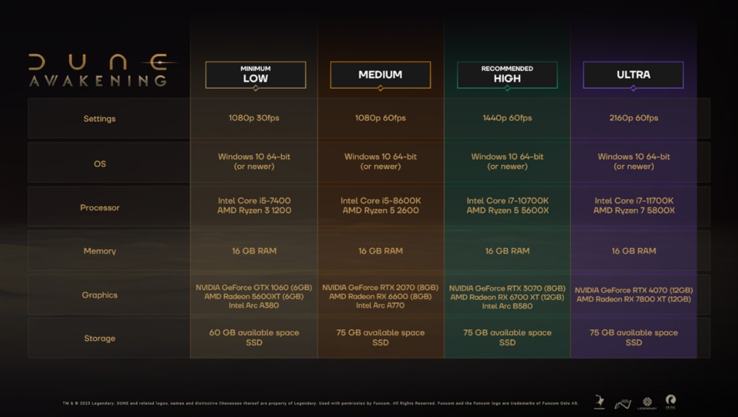Dune: Awakening is out now for the masses, with Funcom holding true to its stated release date of 10th June 2025. It borrows from the developer’s vast expertise in the survival genre with titles such as Conan Exiles.
It is currently available on PC with planned releases expected on both the PlayStation and Xbox platforms later in 2026. Publicly available Steam statistics put its peak concurrent player count at just over 142,000 players at the time of writing.
Dune: Awakening: What To Expect
The game starts players off with a tutorial that walks you through most of its mechanics and a quest system that can be approached at your own pace, but is rather easy to follow and keep up with.
For those expecting a reskinned take on what made Conan so popular with its fans, Dune: Awakening seems to be a significantly different beast, making use of the unique IP it licenses with a focus on building, survival, and looting, and not necessarily in that order depending on where one’s priorities lie when it comes to the desert.
The game, for the most part, scales quite well and allows users to upgrade weaponry, transport options, as well as shields, something that become increasingly important as one traverses through increasingly deadly territory.
One does need to keep an eye on their water gauge at all times, but thankfully, unlike other survival games, that is the only real metric that one needs to keep an eye on to ensure survival.
With that being said, one has to watch out for sandstorms in addition to keeping a steady supply of water in play, something that becomes increasingly important over time, thanks to it being directly used to process iron ore into ingots, amongst other uses.
With ~25 hours under my belt and no Sandworm deaths just yet, I seem to be amongst the luckier ones amongst my guild of builders, fighters and some outright trolls given that we have a ‘kill leader’ who manages to die, on average, every 2 hours to a sandworm and proceeds to rage quit for approximately the same amount of time.
This is warranted given how punishing Sandworm-induced deaths can be - anything you have on you, including your shiny new desert bike, is permanently toast if a sandworm catches up to you on any dune even though you can gear up or embrace an aerial approach to avoid this down the line too.
With that being said, Dune: Awakening is a balanced, if slightly punishing game to start your survival genre journey, even if my impressions are somewhat limited based on what my progress is and information I’ve gleaned from players in my guild who have already unlocked the power of flight.
Hardware Requirements and Performance Impressions
The title itself comes with relatively modest hardware requirements, with users leveraging an RTX 4070 able to run the game at an advertised 4K 60 FPS as intended.
The game was tested on both a 4K 120Hz TV (LG C1 OLED) and an ultrawide 2K 240Hz LG UltraGear 45GR95QE-B monitor, and does seem to do well on both despite the 21:9 resolution on the latter. The test benches used to play the title leveraged the following hardware and software mix:
- CPU: Intel Core i9 14900K/ AMD Ryzen 9 9950X
- RAM: 32GB/48GB of DDR5 RAM running at 6400MT/s
- GPU: Nvidia RTX 3090 Ti 24GB/ Nvidia RTX 3070 Ti
- SSD: Samsung 980 Pro SSD drives
- OS: Windows 11 Pro 24H2 Build 26100.4202
While this isn’t exactly a performance test but a first impression of a game that requires one to sink a significantly higher amount of hours to get to its endgame content, the title does run relatively smoothly on both hardware configurations even though we do lack data when it comes to its performance on the low and medium tier.
Dune: Awakening delivered a solid 100+ FPS at 4K and sub-60 FPS on the RTX 3090 Ti and RTX 3070 Ti, respectively, with DLSS turned on. No real in-game crashes were experienced on the client, even during early access, but it did have a few bugs to start with, most of which were ironed out over time in subsequent patches. It is prudent to point out that Nvidia did release a hotfix update for Dune: Awakening (Display Driver version 576.66) that served as the starting point for my journey.
The title isn’t a shooter per se, mixing up, or even necessitating melee combat in addition to gunplay, so the game might be more forgiving when it comes to lower frame rates.
The game also feels smooth despite playing with a ping of ~110ms to the EU server we decided to inhabit, versus experiences in titles such as Rust and Valheim at similar latencies, which could indicate better netcode in play than similar titles. This might be due to how much goes on at the client-end for users, including all of one’s Spice Dreams (which require you to log back into the server at the end of the quest)
Afterthoughts
As one of the most anticipated titles of the year, one would be slightly miffed to see it launch on a Monday unless you forked over the extra that the early access options commanded (both the Deluxe and the Ultimate edition offered 5 days of pre-release access) to allow you to play over the weekend. While unaffected, one can sympathize with users who might very well be annoyed with the prospect of waiting till the next weekend before they can sink in a good amount of hours, something that the game essentially demands from you.
Despite this, the game redeems itself by being one of the most stable survivalist-themed titles out there, at least at launch, a solid progression system and something that I am a fan of: a rewarding PvE experience that you can approach at your own pace (with optional PvP for those of us who want it).
Transparency
The selection of devices to be reviewed is made by our editorial team. The test sample was given to the author by the manufacturer free of charge for the purposes of review. There was no third-party influence on this review, nor did the manufacturer receive a copy of this review before publication. There was no obligation to publish this review. As an independent media company, Notebookcheck is not subjected to the authority of manufacturers, retailers or publishers.
This is how Notebookcheck is testing
Every year, Notebookcheck independently reviews hundreds of laptops and smartphones using standardized procedures to ensure that all results are comparable. We have continuously developed our test methods for around 20 years and set industry standards in the process. In our test labs, high-quality measuring equipment is utilized by experienced technicians and editors. These tests involve a multi-stage validation process. Our complex rating system is based on hundreds of well-founded measurements and benchmarks, which maintains objectivity. Further information on our test methods can be found here.




